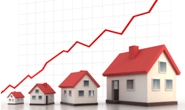Steel Markets

Home Construction Ends Second Quarter with Solid Gains
Written by Sandy Williams
July 19, 2020
Housing starts in June jumped 17.3 percent from May to a seasonally adjusted annual rate of 1,186,000. Single-family starts jumped 17.2 percent and multi-family construction leapt 18.6 percent.
 Regionally, housing starts soared 114.3 percent in the Northeast and climbed 29.3 percent in the Midwest and 20.2 percent in the South. Housing starts declined by 7.4 percent in the West. Single-family housing starts expanded across all four regions with the highest growth in the Northeast at 111.8 percent.
Regionally, housing starts soared 114.3 percent in the Northeast and climbed 29.3 percent in the Midwest and 20.2 percent in the South. Housing starts declined by 7.4 percent in the West. Single-family housing starts expanded across all four regions with the highest growth in the Northeast at 111.8 percent.
“Fueled in part by record low mortgage rates, builders are seeing solid demand for housing despite the challenges of the virus and elevated unemployment,” said National Association of Home Builders Chairman Chuck Fowke. “Demand is growing in lower density markets, including exurbs and small metros.”
Permit authorizations rose 2.1 percent from May to a SAAR of 1,241,000. Single-family permits rose 11.8 percent month-over-month while multi-family permit authorizations fell 14 percent. Permit authorizations were up 10 percent in the Northeast and Midwest, but contracted in the South and West.
“Single-family construction is expanding off April lows due to lean inventories of new and existing homes,” said NAHB Chief Economist Robert Dietz. “However, builders face challenges in growing costs, particularly rising prices for lumber.”
Year-to-date data, compared to the same period last year, shows combined single-family and multifamily starts are 2.2 percent higher in the Midwest, 0.2 percent higher in the South, 2.9 percent higher in the West and 5.4 percent lower in the Northeast. Regional permit authorizations for the period were 3.4 percent higher in the South, 8.8 percent lower in the Northeast, 2.3 percent lower in the Midwest and 3.9 percent lower in the West.
The housing data supports the latest survey by NAHB/Wells Fargo Housing Market Index. The July HMI showed builder confidence for single-family home construction jumped 14 points to register 72, a solid pre-pandemic reading, said NAHB.
“Builders in the Northeast and the Midwest are benefiting from demand that was sidelined during lockdowns in the spring,” said Fowke. “Low interest rates are also fueling demand, and we expect housing to lead an overall economic recovery.”

Sandy Williams
Read more from Sandy WilliamsLatest in Steel Markets

CRU: Sheet import demand softens as domestic price gains have slowed
US domestic sheet price gains have begun to slow as previously pulled-forward demand has led to a decline in orders.

CMC looks beyond Arizona micro-mill woes to long-term viability of construction mart
Despite the economic and geopolitical upheaval of the last five years, CMC President and CEO Peter Matt points out that the construction market has been an essential element of the way forward.

US importers face stricter rules under revamped S232 tariffs
“CBP expects full compliance from the trade community for accurate reporting and payment of the additional duties. CBP will take enforcement action on non-compliance," the agency said in a March 7 bulletin.

Steel exports rebound in January
US steel exports recovered to a five-month high in January after having fallen to a two-year low in December. This growth follows four consecutive months of declining exports.

Construction spending drops marginally in January
Construction spending edged down slightly in January, slipping for the first time in four months. The US Census Bureau estimated spending at a seasonally adjusted annual rate of $2,196 billion in January, down 0.2% from December’s downward revised rate. The January figure is 3.3% higher than a year ago. January’s result, despite the slight erosion, […]
